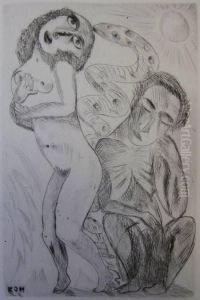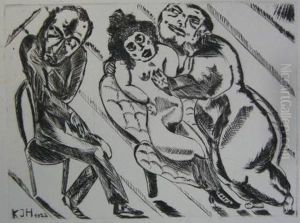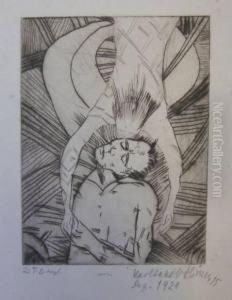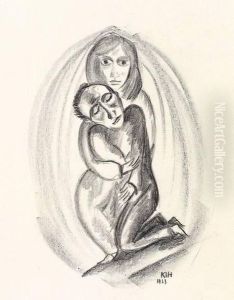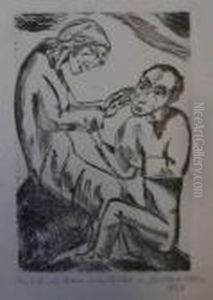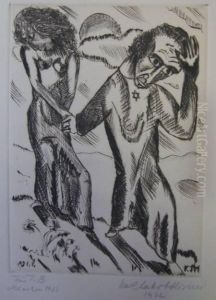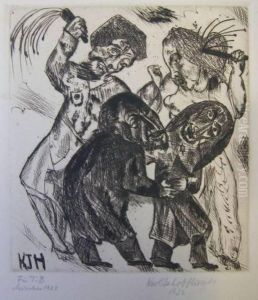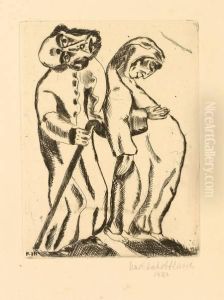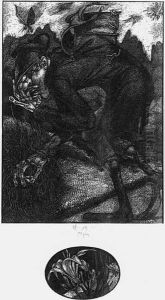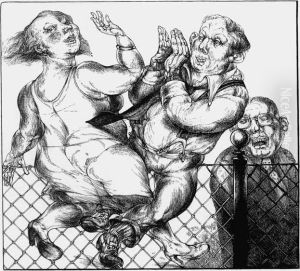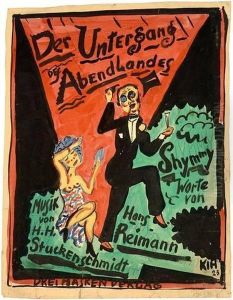Karl Jakob Hirsch Paintings
Karl Jakob Hirsch was a German artist and writer known for his contributions to the Expressionist movement. He was born on July 8, 1904, in Breslau, which was then part of the German Empire and is now Wrocław, Poland. Hirsch's early life was marked by the turbulent times of World War I and the subsequent political upheavals in Germany, which influenced his artistic outlook.
Hirsch's artistic talent was evident from a young age, and he pursued his passion by studying at the Academy of Fine Arts in Munich. His work during this period was characterized by a strong expressionist style, with bold colors and dramatic forms. Hirsch was part of a generation of artists who sought to convey emotional experience rather than physical reality, often focusing on themes of human suffering, spirituality, and the inner psyche.
During the 1920s, Hirsch's work gained recognition, and he became involved with various expressionist groups and publications. He contributed illustrations to magazines and created woodcuts, a medium that suited his expressive line work and stark contrasts. His literary interests also flourished during this time, and he wrote several expressionist plays and essays.
With the rise of the Nazi regime, Hirsch, who was of Jewish descent, faced increasing persecution. His art was deemed 'degenerate' by the Nazis, and he was forbidden from exhibiting or selling his work. Despite these oppressive conditions, Hirsch continued to create art in secret. He also began to include more overt political themes in his work, critiquing the brutality of the Nazi regime.
After World War II, Hirsch's work received renewed attention, and he was able to resume his career, although the scars of the war and his experiences under Nazi rule left a lasting impact on his art and writings. He continued to explore the human condition, often reflecting on themes of tragedy, resilience, and the search for meaning in a post-war world.
Karl Jakob Hirsch passed away on December 18, 1972, in Munich, Germany. Although his work is not as widely known as some of his contemporaries, his contributions to Expressionism and his artistic and literary works remain a testament to his talent and his resilience in the face of adversity. His legacy is preserved in various collections and museums that house examples of his art and in the memories of those who appreciate the depth and intensity of his vision.
